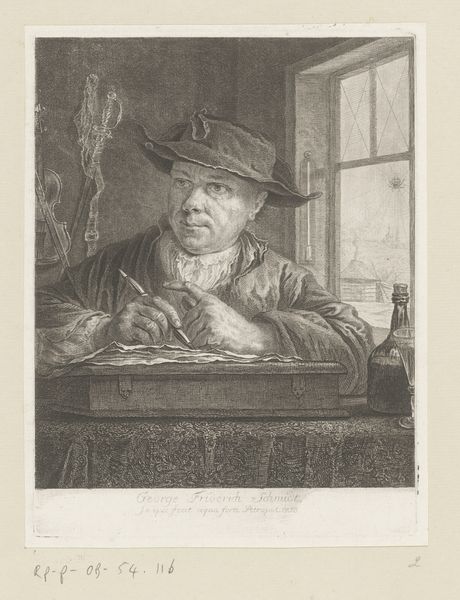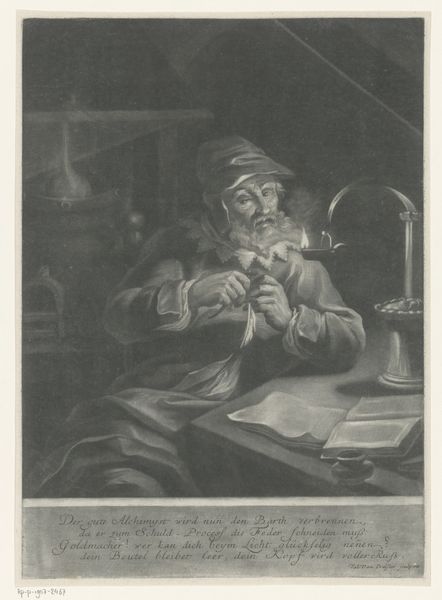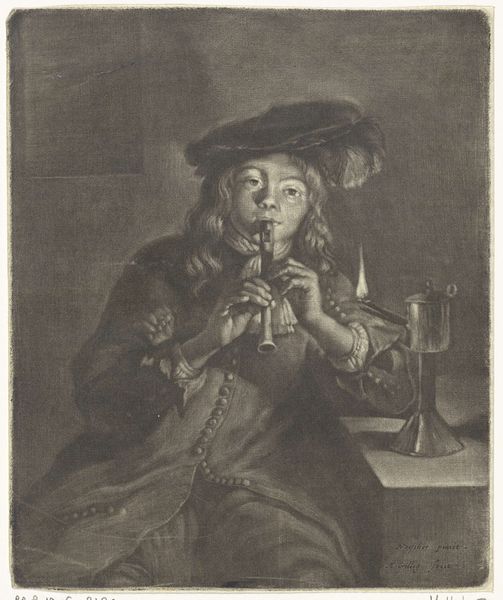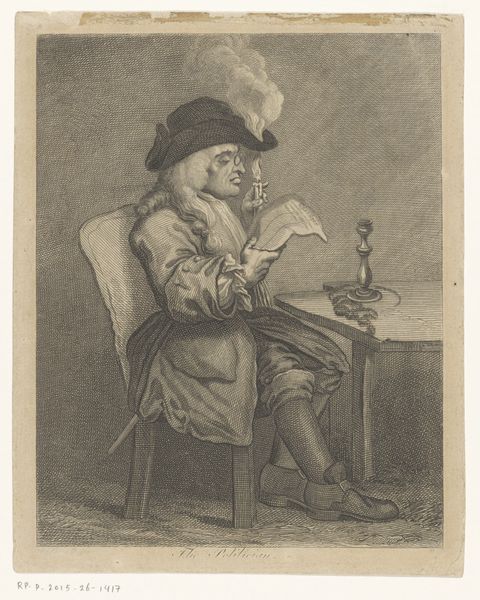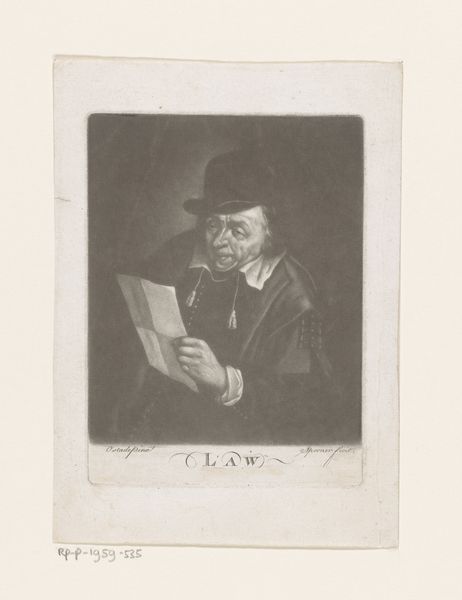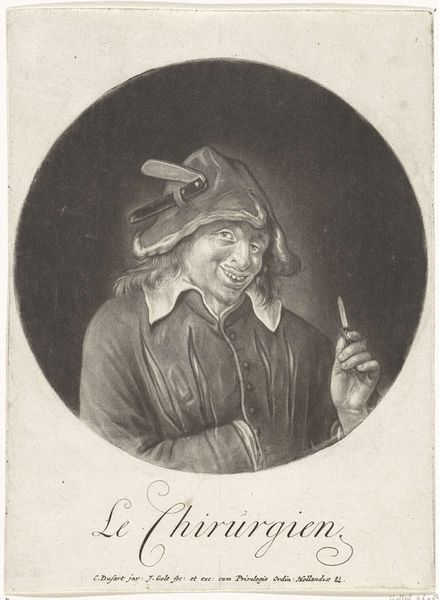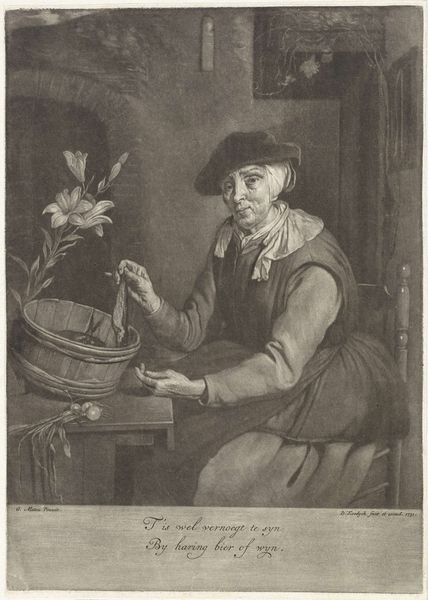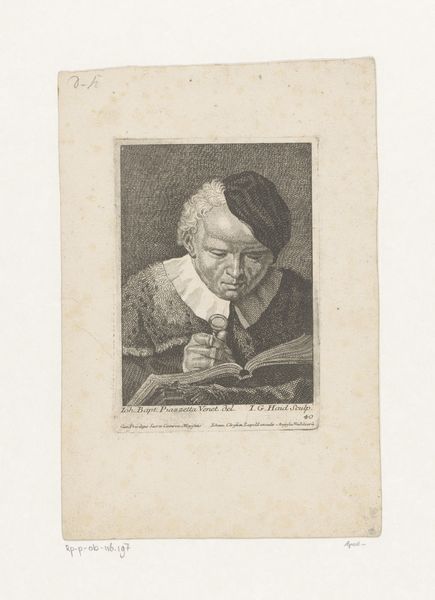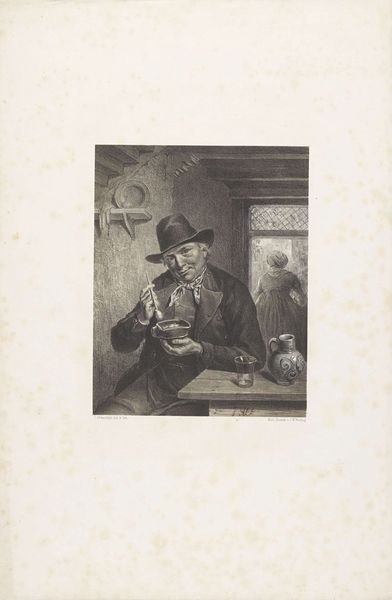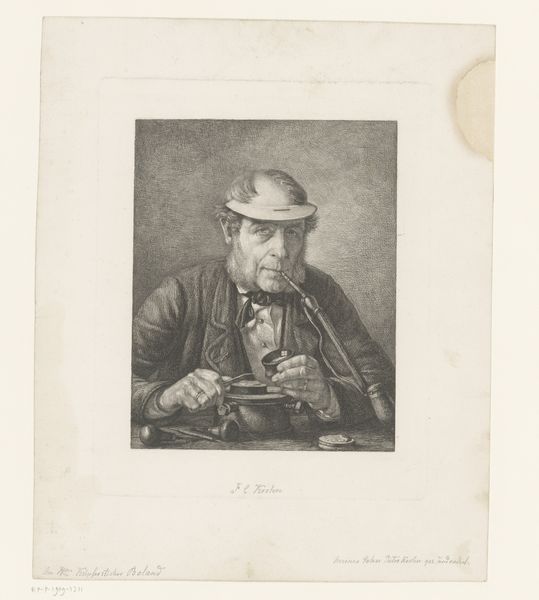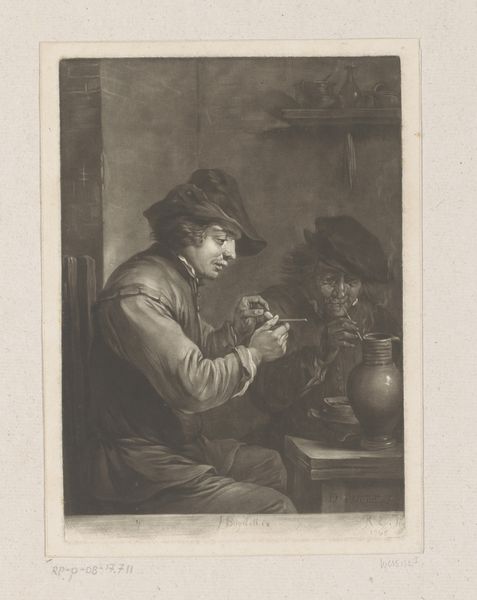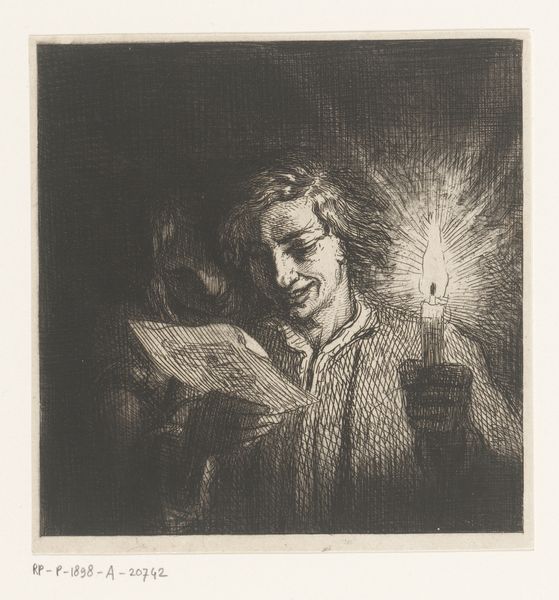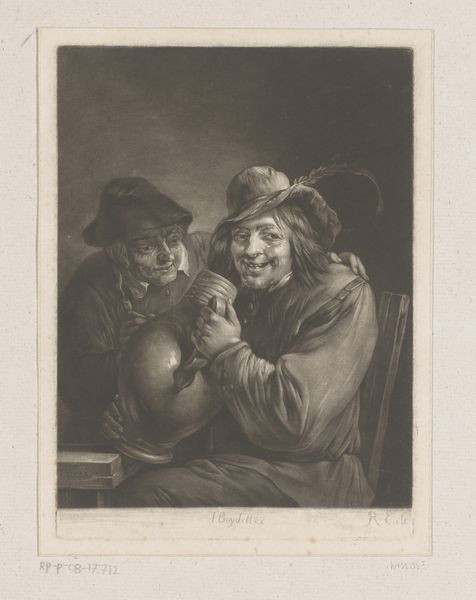
Dimensions: height 247 mm, width 183 mm
Copyright: Rijks Museum: Open Domain
Editor: So, this engraving, “Jongen bij kaarslicht,” created sometime between 1805 and 1847 by Anna Kobell… It’s quite striking, with the single figure illuminated by candlelight. It’s intriguing. What stands out to you in this piece? Curator: I’m immediately drawn to the materials and process. It's an engraving, a reproductive medium meant for wider distribution. The question is: how does its means of production—the act of carving and printing—affect its reception? Consider its socio-economic role; prints were more accessible than paintings. Editor: So, you’re saying the accessibility is key to its meaning? Curator: Absolutely. And look closely at the figure – his jovial demeanor, the glass of wine. What does that suggest about the intended audience and the potential commentary on class and consumption? How does the labor involved in creating the print compare to the subject it depicts? The production is a laborious, detailed practice resulting in the distribution of images of leisure. Editor: That's interesting, I hadn't considered that contrast. So, it's less about the artist's individual expression and more about the wider cultural and economic context. Curator: Precisely. We must analyze how the materiality and distribution intersect with societal norms and expectations. It's a lens through which to examine the complex interplay of art, labor, and class in that period. Do you think that this illuminates its themes and relevance? Editor: Yes, it does. I'm seeing this print as a commodity within a system, rather than a standalone artistic creation. It gives me a lot to think about in terms of social commentary.
Comments
No comments
Be the first to comment and join the conversation on the ultimate creative platform.
